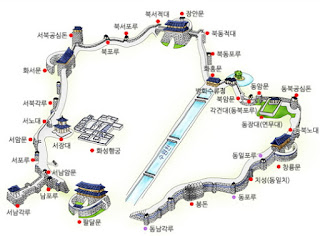Korea Tour Tips : Seoul hotels offer family packages for May
Early May this year has many national holidays ― Labor Day on May 1, Children's Day on May 5 and the presidential election on May 9 ― making it a perfect time for a short vacation.
Thus, hotels in Seoul are offering a variety of family packages for those who are looking to spend time with beloved ones in the city.
Seoul Plaza Hotel
Sheraton Seoul D Cube City Hotel
Sheraton Seoul D Cube City Hotel's "All for My Kids" package is for families with babies. The package includes a one-night stay in a Deluxe Room, Disney baby bath products, such as Mickey Mouse slippers and a Disney character bucket and basket, as well as a bath ball and the Sheraton signature D-bear. It also comes with free access to the gym and swimming pool, and three muffins. The package costs 265,000 won, excluding tax and is available in the entire month of May.
For more information and reservations, call 82-2- 2211-2100.
Grand Hilton Seoul
Grand Hilton Seoul is presenting a family package that includes a night stay in a hotel room, breakfast for three, a bucket of fried chicken and potato wedges and free access to the gym and indoor swimming pool.
The hotel is located near Mount Ahn and Mount Baegryeon both of which are famous for their spring flowers. The package costs 240,000 won, excluding taxes and service fees, plus extra for additional guests.
For more information and reservations, call 82-2- 2287-8400.
Imperial Palace Seoul Hotel
Imperial Palace Seoul Hotel is offering the "Kids Forest" package in the month of May.
The package includes a one-night stay in a hotel room, a gift set of a Soopsori DIY wooden toy and LUSH fun bubble bar and a late-night snack for room service. Guests also have complimentary access to the fitness club and indoor swimming pool, and female guests can enjoy free valet parking service. The package starts at 219,000 won, excluding tax and service fees.
For more information and reservations, call 82-2- 3440-8000 or
visit : www.imperialpalace.co.kr.
THE PLAZA
THE PLAZA is offering the "Hello Jadoo! Hello" package between April 29 and May 7, featuring Jadoo, a beloved animated TV character.
The package includes a one-night stay in a hotel room, breakfast for three at the hotel's buffet restaurant, three tickets to either the dance performance shows "Scarecrow" and "Wow Classic Ensemble" at the Sejong Center for the Performing Arts or to a fun kids' workshop with Jadoo. Guests can also enjoy complimentary access to the gym and tickets to Deoksu Palace. The package starts at 230,000 won, excluding tax and service fees.
For more information and reservations, call : 82-2-310-7710.














